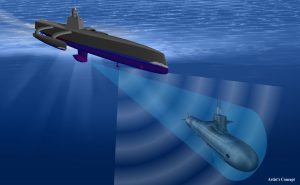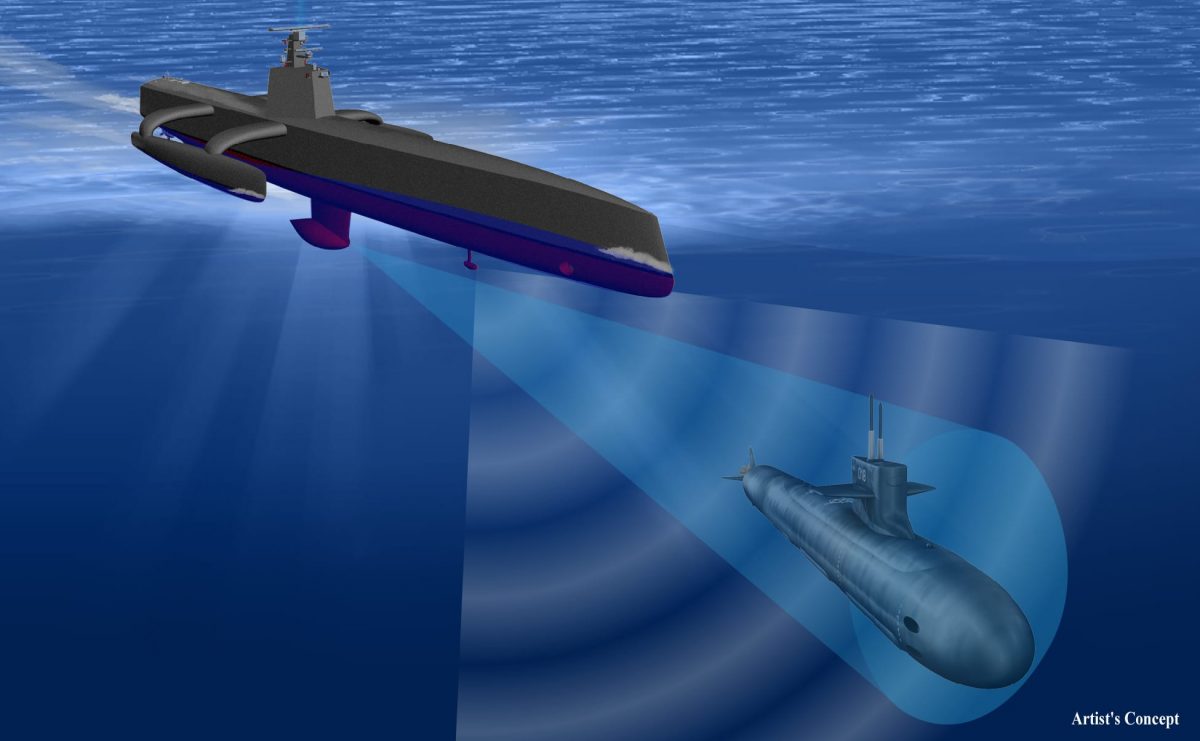First UAVs, Now Ships – Connectivity for the next generation of remote naval operations

Today, ship captains participate in video conferences with commanders ashore, and sailors watch the Super Bowl live while checking email on their smartphones – all because of robust satellite connections. Now the new generation of high-throughput satellites (HTS) such as Intelsat’s Epic constellation promise to take that connectivity a step further, opening a new era of remote vessel management and even completely autonomous operations. HTS is driving a revolution in connecting ship movements to maritime operations centers (MOCs) hundreds – and often thousands – of miles away. Only satellites can provide this kind of connectivity because naval operations by nature cannot be supported by signals that require line-of-sight.
The Office of Naval Research conducted a demonstration earlier this year in the Chesapeake Bay of an autonomous “swarm,” a fleet of small, human-free boats that can collectively patrol areas and detect intruders. The dramatically increased bandwidth available via HTS networks is expected to have a major impact on the development of such systems, supporting the Navy’s ocean-going efficiency and effectiveness.
In a recent article in the U.S. Naval Institute, Commander Chris Rawley described how such swarm boats could be used effectively: “Unmanned systems will enhance the distribution and number of naval platforms. Whereas in the past an individual ship or submarine might have been put on station to collect intelligence, tomorrow that same vessel may act as a mother ship for dozens of unmanned “drones” operating independently and scouting an area of interest. So while a shrinking Navy may result in fewer ships on station in a given area, the actual units of action at sea will be higher in number and require delegated operations.”
The Defense Advanced Projects Research Agency (DARPA) is supporting something called the Anti-Submarine Warfare Continuous Trail Unmanned Vessel project to develop an autonomous ship that could track a diesel-electric submarine for months at a time. DARPA says requirements include “autonomous compliance with maritime laws and conventions for safe navigation, autonomous system management for operational reliability, and autonomous interactions with an intelligent adversary.”
Development of autonomous vessels that operate beneath the waves is progressing as well. Boeing is working with military shipbuilder Huntington Ingalls to design and build the Echo Voyager, a remote drone submarine 51 feet long. The Echo Voyager is designed to operate for months at a time without the need for a support vessel, carrying out missions like data collection.
Many challenges remain to fully take advantage of being able to operate without on-board crews. One major factor is information assurance. Remote and unmanned naval systems will need to operate in areas prone to GPS or other electronic jamming, spoofing, and interference by adversary forces. In this area as well, the new HTS systems are an evolution from traditional commercial SATCOM.
For example, Intelsat Epic is engineered to allow for a more protected level of commercial SATCOM. Low-probability of intercept (LPI) and jamming-resilience greatly enhance anti-jamming capabilities on Epic satellites, even to non-hopping modems. They are also engineered to allow customers to change power levels, and Intelsat is looking at the possibility of adding beam shaping to future satellites. Epic also features interference-mitigation capabilities like on-board power monitoring and notch filtering of interferers/unauthorized users as well as monitoring, re-routing, geo-location, and identification of interferers.
The vast expanses of the world’s oceans have always posed communication challenges for naval vessels. Satellite connectivity changed that equation for basic communications, and now HTS systems are poised to support the remote and autonomous systems that will reduce risk and increase the effectiveness of naval personnel.
More information on Intelsat Epic






















